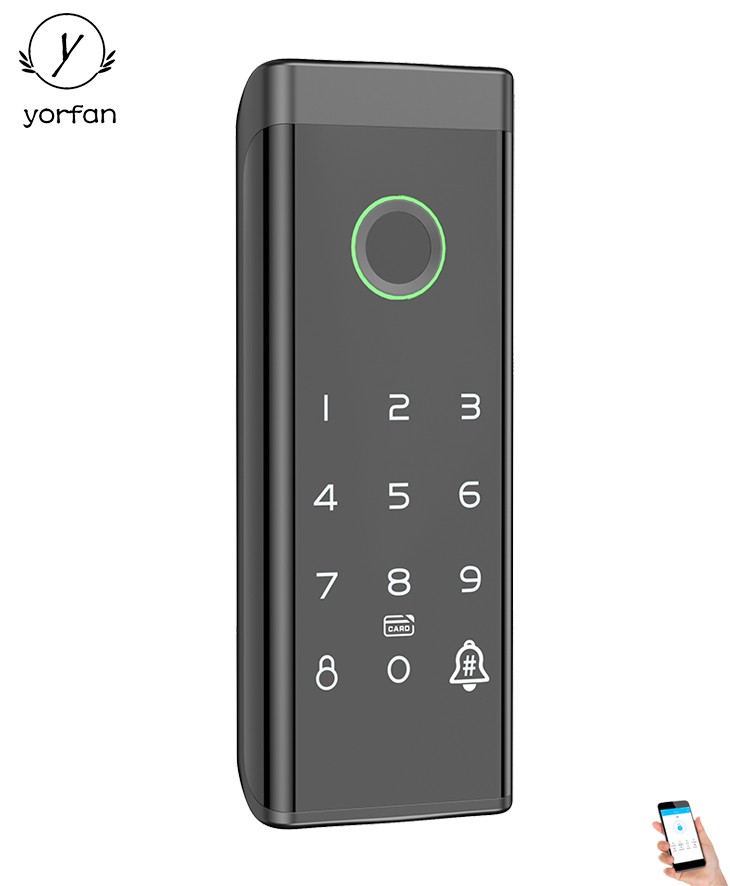Oct. 11, 2025
Difference Between Mechanical and Electronic Combination Locks: A Comprehensive Guide by YORFAN
As a leading smart lock manufacturer, YORFAN is dedicated to providing innovative security solutions for homes and businesses worldwide. Whether you are upgrading your security system or simply exploring your options, understanding the difference between mechanical and electronic combination locks is essential. This article delves deep into the key distinctions, advantages, and considerations of these two popular locking mechanisms, helping you make an informed decision for your property.
What Are Combination Locks?
Combination locks are security devices that require a specific sequence of numbers, symbols, or operations to open. They are widely used for securing doors, safes, lockers, cabinets, and more. The two main types of combination locks are mechanical and electronic, each with its unique features and benefits.
Mechanical Combination Locks: Classic Reliability
Mechanical combination locks have been around for decades and are renowned for their simplicity and durability. These locks operate without batteries or electronics, relying instead on a series of rotating dials or wheels to align internal mechanisms and release the locking bolt.
bluetooth locker lock
tuya wifi smart fingerprint glass door lock yfbg 02
invisible bluetooth interior door lock yfb 2052
electronic cylinder bluetooth door lock yfb cl001
zigbee smart lock yffz x3plus
rf card hotel lock system yfh 3100
smart bluetooth electronic locker lock bp 760

Operation: Users enter a preset sequence by turning dials or rotating a knob to align the correct numbers.
Power Source: No batteries or electrical power required.
Maintenance: Minimal; occasional lubrication may be needed.
Applications: Widely used for lockers, safes, and gates.
Advantages of Mechanical Combination Locks
Reliability: With fewer parts that can fail, mechanical locks are exceptionally reliable in the long term.
Weather Resistance: These locks often perform well in extreme temperatures and adverse weather conditions.
No Power Needed: Always functional, even during power outages.
Cost-Effective: Typically less expensive than their electronic counterparts.
Limitations of Mechanical Combination Locks
Limited Combinations: The number of possible combinations is often lower than electronic locks.
Resetting Codes: Changing the code can be cumbersome and may require disassembling the lock.
Wear and Tear: Over time, dials may become less precise, making the lock harder to operate.
Electronic Combination Locks: Modern Security Solutions
Electronic combination locks represent the next generation of access control. Utilizing digital keypads, touchscreens, or even biometric sensors, these locks offer advanced security features and convenience, making them a popular choice for smart homes and businesses.
Operation: Users input a numeric code or pattern via a keypad or touchscreen.
Power Source: Battery-operated or connected to a power supply.
Maintenance: Periodic battery replacement or firmware updates.
Applications: Ideal for residential doors, offices, and commercial properties.
Advantages of Electronic Combination Locks
High Security: Supports complex codes, multiple user profiles, and anti-tamper features.
Easy Code Management: Changing or resetting codes is simple and can often be done remotely.
Integration: Can be integrated with smart home systems, alarms, and access logs.
Custom Features: Options like temporary codes, audit trails, and remote unlocking add convenience.
Limitations of Electronic Combination Locks
Power Dependency: Requires batteries or a power source, which can fail if not maintained.
Cost: Generally more expensive due to advanced features.
Vulnerability: Susceptible to hacking if not properly secured.
Environmental Factors: Extreme temperatures or moisture can affect electronic components.
Mechanical vs. Electronic Combination Locks: A Side-by-Side Comparison
| Feature | Mechanical Combination Lock | Electronic Combination Lock |
|---|
| Operation | Manual dials/knobs | Keypad/touchscreen |
| Power Source | None | Batteries/electricity |
| Security Level | Basic to moderate | High, customizable |
| Code Management | Manual, complex | Easy, remote options |
| Maintenance | Low | Moderate (battery/updates) |
| Integration | Limited | Smart home compatible |
| Cost | Lower | Higher |
Choosing the Right Lock for Your Needs
When deciding between mechanical and electronic combination locks, consider your specific requirements:
Security Level: For high-security applications, electronic locks with advanced features may be preferable.
Budget: Mechanical locks offer robust protection at a lower price point.
Convenience: Electronic locks provide easier code management and integration with other smart devices.
Power Availability: If power outages are a concern, mechanical locks ensure uninterrupted access.
YORFAN: Your Trusted Smart Lock Manufacturer
At YORFAN, we blend traditional craftsmanship with cutting-edge technology to deliver a comprehensive range of security solutions. Our portfolio includes both robust mechanical combination locks and state-of-the-art electronic combination locks, designed to meet the diverse needs of our customers.
As a dedicated smart lock manufacturer, YORFAN is committed to rigorous quality control, user-friendly design, and continuous innovation. Our products are trusted by homeowners, businesses, and institutions worldwide for their reliability and performance.
Smart Home Integration: The Future of Security
With the rise of smart homes, electronic combination locks have become increasingly popular. YORFAN’s smart locks seamlessly integrate with leading home automation systems, offering features like remote access, real-time alerts, and voice control. This not only enhances convenience but also elevates the overall security of your property.
Conclusion: Making the Right Choice
Both mechanical and electronic combination locks have their place in modern security systems. Mechanical locks are prized for their simplicity and reliability, while electronic locks offer unparalleled convenience and advanced features. As a reputable smart lock manufacturer, YORFAN recommends evaluating your unique needs, environment, and budget before making a decision. For more information or to explore our full range of combination locks, contact YORFAN today and secure your peace of mind.


